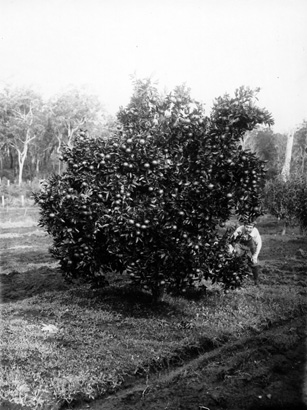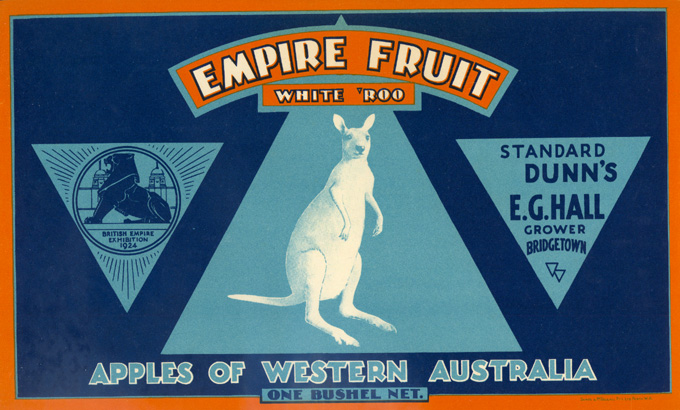|
Orchards
At Federation there was a considerable interest in the prospects of Western Australia's orchards providing the
new State with an export industry. While the local market still relied on imports of fruit from the eastern states and Italy, the acreage of fruit crops being planted in Western Australia
suggested a bright future for the orchard industry.
During the last half of the nineteenth century apple, pear and orange orchards had been established east of Geraldton, at
New Norcia, Bindoon, Harvey, along the banks of the Swan River, in the Darling Range and at Kalamunda, Katanning, Mt Barker, and in the Blackwood and Sussex districts. Between 1901 and 1907 the area of land planted for fruit
growing doubled from 2,144 hectares to 4,466 hectares. By 1914 8,333 hectares of land had been planted for orchards, reflecting the rapid growth and development of the industry.
As early as 1900 small trial shipments of Western Australian apples, oranges and grapes were sent to London in order to test the market. The first small commercial shipment of apples was exported in 1910,
rapidly becoming increasing to 126,808 cases by 1914. The success of apple exporting was the result of a number of developments.
The introduction of cool storage for shipping fruit from about 1905 was a particularly important innovation which was quickly popularised due to the excellent condition in
which fruit was maintained. In 1911 the red-wood case made of jarrah and karri was introduced for shipping export apples. The apple industry was further strengthened by
the establishment of a central packing-shed at Bridgetown to handle large quantities of apples was followed by another packing centre at Mt Barker.
|









